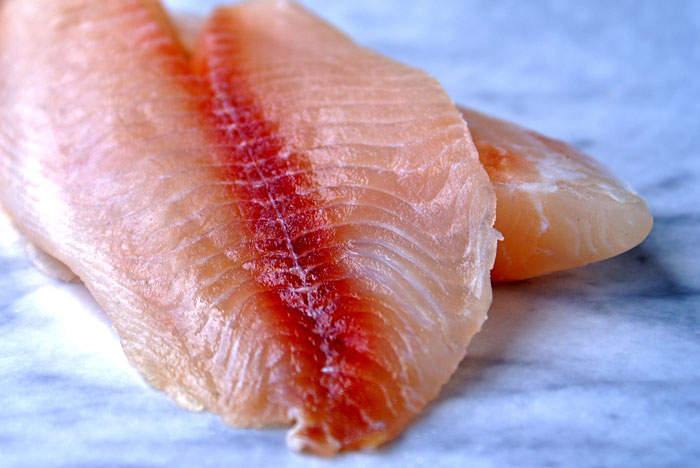Sometimes, at seafood sustainability conferences, talk can get circular. Buyers from big chains speak about wanting to change but needing demand from the market to do so. Scientists and chefs talk about sustainable fish that most of us can't find. So how are we individuals supposed to create a demand for something not on the shelves? When I posed this question in back in May at the Monterey Bay Aquarium's annual Cooking for Solutions Conference, the answer from both sides was unanimous and surprisingly simple: just ask.
 While it’s easy to feel that we alone have no say in what’s available at the fish counter, that’s just not so. When it comes to voicing a desire for more eco-friendly alternatives, now more than ever companies are likely to listen. Here are a few tips to jump-start the conversation:
While it’s easy to feel that we alone have no say in what’s available at the fish counter, that’s just not so. When it comes to voicing a desire for more eco-friendly alternatives, now more than ever companies are likely to listen. Here are a few tips to jump-start the conversation:
Know what you want and why. Take shrimp, for example. Rather than asking for “sustainable shrimp” and leaving it to the fishmonger to decide the details, take a moment to browse Seafood Watch before you go (or do it at the store on your iPhone). In about 30 seconds, you’ll see that all imported shrimp are ranked “avoid”and that all US shrimp, whether farmed or wild-caught, are rated “best choice” or “good alternatives”. You could certainly dig deeper to find out why, but just knowing ahead of time what to buy and what to avoid is a great start.
Be bold in both your questions and your answers. So let’s say that you’ve asked for domestic shrimp and the guy behind the counter answers with, “These are from Thailand, I think, or maybe Vietnam. They’re on sale. It's a great deal.” Hmm. Not exactly on the same page. Now here is where you can clarify exactly what you're looking for and why. It may sound pushy, but it’s perfectly acceptable to say something like, “You know, Seafood Watch didn't rate imported shrimp very high on the sustainability scale, which is why I was looking to buy domestic. Do you think you could get me some?” Regardless of whether or not he (or his manager) will actually put in an order, he now knows that the shrimp he’s selling isn’t super eco-friendly and that at least one of his customers would prefer a more sustainable choice.
Be open to hearing and sharing new ideas. Once you’ve established a rapport with your fishmonger, you can start to take it further. If you learn about a fish you hadn't heard of before but want to try, challenge your purveyor to find it for you. And if he knows you’re interested in sustainable seafood, he might just pick up the mantle and start seeking new sources himself.
The truth is, change is often spurred within the context of a relationship and moving the needle on sustainable seafood is no exception. You don’t have to be a chef or a big corporate buyer to have an impact; all you have to do is ask.
This week, start a conversation with your fishmonger and see where it leads the both of you.










